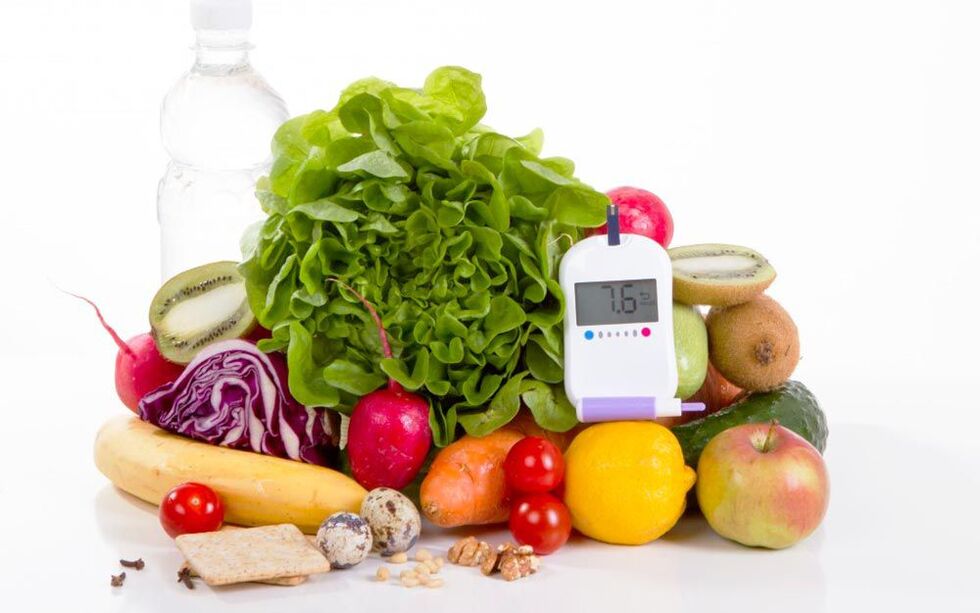
Diabetes is a common disease, perhaps every adult has heard of it. It can be congenital or acquired in life, but in any case, it is chronic and cannot be completely cured. Many people have heard that diabetes is not a disease, but a way of life. After all, patients must use a special diet and individually selected drugs throughout their lives, instead of always injecting insulin. Generally speaking, diabetes nutrition cannot be considered as a diet in a broad sense, because it is not so restrictive, and most banned products can be replaced with similar tastes, but it is safe for sensitive bodies. patient.
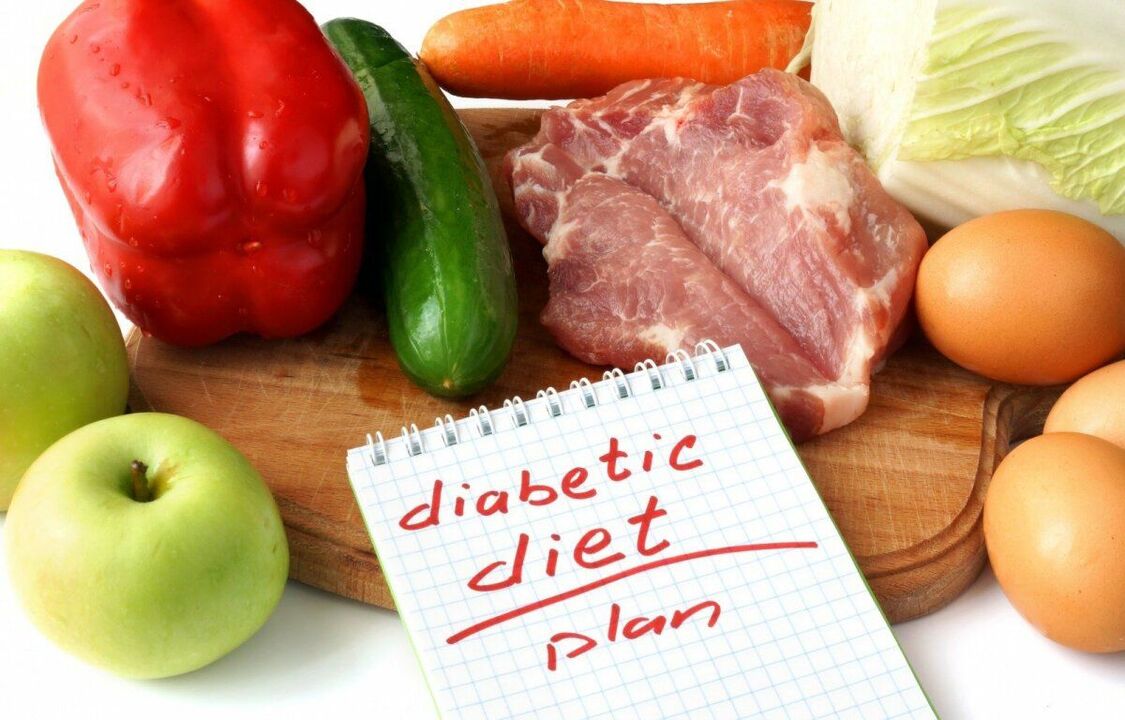
What is diabetes and its types
Diabetes is a chronic disease with disorder of glucose metabolism. This may be the result of a decrease in the amount of insulin hormone produced by pancreatic cells, and then be diagnosed as type 1 diabetes (insulin-dependent), or as a result of frequent overeating, leading to obesity, severe stress and other factors, and then developing into type 2Diabetes (non-insulin dependent).
Insulin is a biologically active substance released into the blood to capture glucose molecules and deliver them to the desired cells.
The most commonly diagnosed type 2 diabetes today requires doctors to pay closer attention and observe special nutritional principles, because it becomes the result of a person's unhealthy lifestyle. With regular intake of large amounts of carbohydrates in the body, the pancreas wears and tears, and eventually either stops coping with its function or produces "damaged" insulin that cells and tissues cannot perceive. This means that this insulin cannot capture glucose and transport it to its destination because the cell "cannot see" it, ie. Development is not sensitive to it. With age, hormonal background changes will inevitably occur, which plays an important role in it.
In both cases, the concentration of glucose (sugar) in the blood increases dramatically and characteristic symptoms appear:
- Increased thirst;
- Dry mouth;
- weakness;
- Decreased vision;
- Increased appetite, etc.
Type 2 diabetes is most commonly diagnosed, that is, 85-90% of patients. It usually happens 40 years later, especially 65 years later. The susceptibility of the elderly to the development of carbohydrate metabolism disorders is the result of reduced physical activity and reduced muscle mass, which is the main consumer of glucose, and abdominal obesity is increasingly observed as an additional factor. Risk of developing non-insulin-dependent diabetes.
Abdominal obesity is the main deposition of fat tissue in the abdomen.
Diagnosing diabetes is not difficult. To this end, blood glucose testing is performed. Obtaining increased indicators is the reason for further examination and selection of the best treatment strategy, and one of the mandatory components is nutritional correction.
Why it is important to follow basic nutrition principles
With any type of diabetes, blood sugar levels will rise, but nonetheless, cells cannot accept it due to insulin deficiency or the development of insulin resistance. Since glucose is a simple sugar and a product of carbohydrate breakdown, it is the main source of energy for the human body. Therefore, if the tissues do not receive a sufficient amount of energy, they will feel hungry, and the corresponding nerve impulses are transmitted to the brain, causing humans to experience similar feelings. Therefore, patients with diabetes may want to eat something, especially sweet things, even an hour after a full meal.
As a result, patients disclosed excessive consumption of high-calorie carbohydrate foods, which in type 2 diabetes can quickly lead to weight gain and obesity progression. This leads to a greater jump in blood sugar levels, increased pancreatic load, increased insulin production, increased tissue resistance to it, and worsening of the disease, forming a vicious circle.
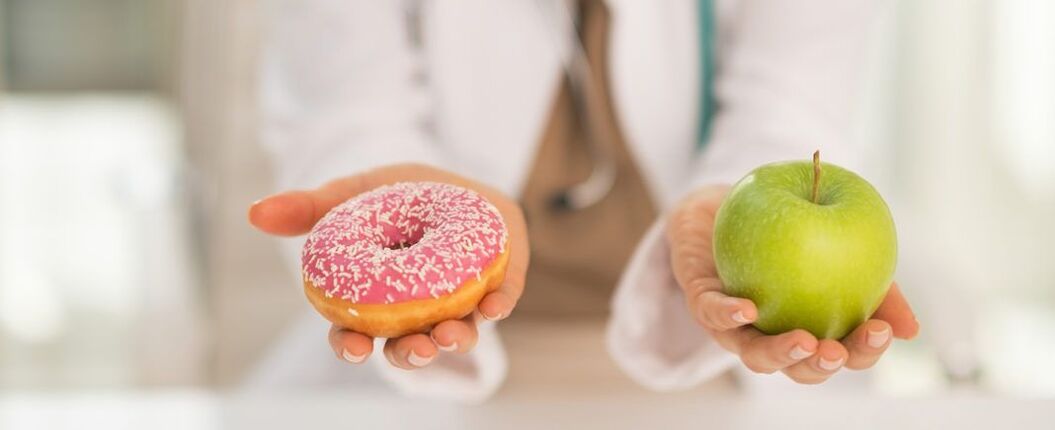
In this case, if you do not intervene in time to break this cycle, high blood sugar (hyperglycemia) will lead to the development of ketoacidosis and diabetic coma. At first, the patient will feel thirsty and often go to the toilet, then soon there will be weakness, shortness of breath, the characteristic smell of acetone in the mouth and urine, and nausea and vomiting. Without qualified medical care, confusion can occur and eventually lead to diabetic coma.
In addition, long-term uncontrolled diabetes (decompensation) can lead to:
- Retinopathy, followed by irreversible blindness;
- Impaired renal function and chronic renal failure;
- Nutritional ulcers on the legs heal poorly and are very difficult to treat;
- Osteoporosis, even a slight impact, can cause any bone fracture of the bones, including the spine;
- Diseases of the heart, blood vessels, digestive tract organs, etc.
Therefore, it is important not only to diagnose diabetes in time and take the medication prescribed by the endocrinologist, but also to strictly follow the nutritional recommendations.
Diet characteristics
There are some differences in diets for type 1 and type 2 diabetes, which patients should be aware of. Regarding the nutrition of insulin-dependent diabetes, patients receive life-long replacement therapy in the form of regular insulin injections. Doctors in different countries view the necessity of restricting simple carbohydrates in different ways.
Foreign endocrinologists believe that it is not necessary to reduce the intake of patients with type 1 diabetes by choosing appropriate insulin therapy. Domestic doctors believe that this is full of undesirable consequences and insist on restricting the intake of simple carbohydrates, but they cannot completely give up like non-insulin-dependent diabetes. In type 2 diabetes, this argument is inappropriate, because the use of sugar can lead to terrible consequences, which has not been questioned in any country.
In addition, patients with type 1 diabetes should be able to calculate the unit of bread (XE), and patients with type 2 diabetes should be able to determine the glycemic index (GI). The structure of nutrition should make these indicators of daily diet meet the established norms.
Therefore, today, patients with diabetes are prescribed various modified so-called No. 9 diets, and the difference between them is negligible. Which form is most suitable for a particular patient is determined by the endocrinologist based on the results of the analysis and the patient's condition.
Generally speaking, the No. 9 diet is designed to normalize carbohydrate metabolism by reducing the amount of simple carbohydrates consumed, thereby reducing blood glucose levels. Therefore, the sugar content in the blood can be restored to normal, and possible fat metabolism disorders and disease complications can be prevented.
Diet 9 It is assumed that simple carbohydrates are completely rejected under the background of daily intake of no more than 300 grams of complex carbohydrates, and the amount of protein foods is kept within physiological standards.
Basic nutritional principles
For any type of diabetes, the following recommendations should be followed:
- Food should of course be part of the food, including at least 5 meals, especially insulin-dependent;
- Breakfast is a mandatory meal;
- When formulating a menu, the physiological ratios of protein (meat, fish dishes, dairy products), carbohydrates (cereals, bread) and vegetables should be adhered to, accounting for 25%, 25% and 50% respectively;
- Foods with low glycemic index and high proportion of plant fiber always have nutritional advantages;
- Every meal starts with vegetables and leaves protein at the end;
- The daily amount of salt should not exceed 5 grams;
- It is forbidden to fast due to diabetes. If necessary, increase physical activity to reduce weight;
- When choosing the method of cooking vegetables, it is recommended to give priority to the minimum heat treatment or give up completely. Cooking, roasting and steaming are ideal;
- Vegetarian diet is not the best choice for diabetic patients. Although it helps to improve the course of the disease and increase insulin sensitivity, it is only possible to switch to a vegetarian diet with the permission of an endocrinologist.
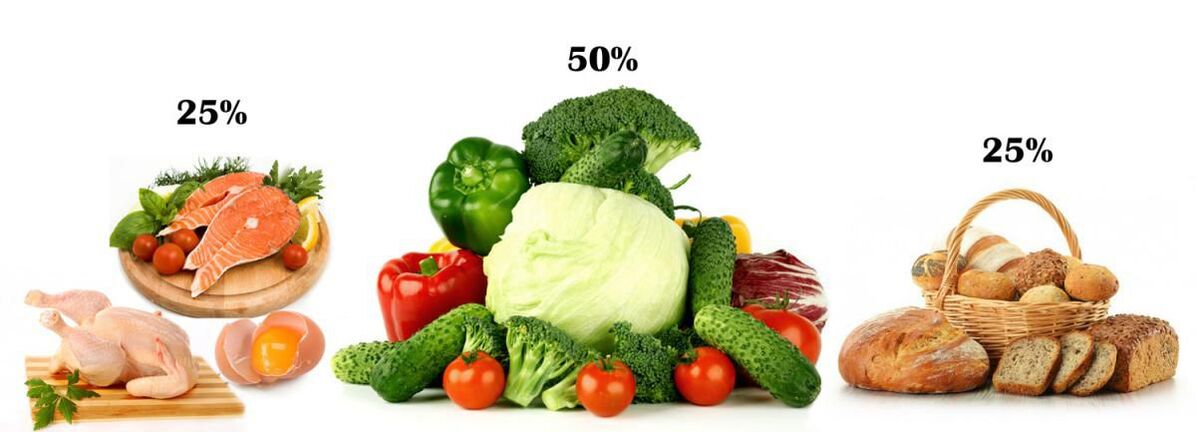
Nutrition for Type 1 Diabetes
Insulin-dependent diabetes is usually diagnosed as early as childhood. Because the reason for its development is the destruction of pancreatic cells that synthesize insulin, it is necessary to treat patients with insulin and choose drugs and doses individually. Insulin injection completely compensates for the lack of hormone production in the body, so significant dietary restrictions are not required, but the child's parent, and then himself, must learn to correctly calculate the amount of carbohydrate consumed so that it corresponds to the dose of insulin given. To this end, a table was created specifically to indicate the so-called number of grain units in each product.
In type 1 diabetes, all you need to do is refuse:
- Any sugary beverage, including fruit juice;
- Ready-made breakfast cereals;
- candy.
You cannot eat more than 7 XE per meal, and a maximum of 25 XE per day. In this case, add up the amount of all carbohydrates consumed per serving. For example, 2 XE is contained in 3 tablespoons. Lake finished pasta, 4 tablespoons. Lake rice, 14 tablespoons. Lake beans or 420 grams of tomatoes.
1 XE is equal to 12 grams of carbohydrates or 20 grams of bread.
Sweets are not strictly prohibited, but only those who control their blood glucose levels several times a day can afford them. They accurately calculate XE and can independently adjust the injected insulin dose.
In severe type 1 diabetes, the patient is prescribed a 9b diet and high-dose insulin. It involves the use of 400-450 grams of carbohydrates, very close to the diet of most modern people. It is allowed to consume 20-30 grams of sugar per day.
The endocrinologist who monitors the patient's condition will definitely tell you how to divide the amount of food between the different doses, depending on the type of medication he prescribes. Therefore, with the introduction of insulin twice a day (morning and afternoon), it is necessary to write a menu so that nearly 2/3 of the total daily carbohydrate intake falls at this time. In addition, after each injection, you need to eat 2 times-15 minutes after the injection and 3 hours after the injection. Partial nutrition and controlling the amount of XE are the basis of the type 1 diabetes diet.
If the patient suddenly feels weak after the injection, this indicates a lack of glucose in the body. In this case, you should eat a piece of dark chocolate immediately.
Therefore, for this insulin-dependent disease, the main difficulty is that what needs to be controlled is not the type of food, but the volume of food and the number of bread units.
Nutrition for Type 2 Diabetes
In most cases, obesity is the main cause of the disease. Therefore, the diet of type 2 diabetes is the first and main component of the treatment and prevention of complications. With its help, it will be possible to normalize sugar levels and control weight, thereby preventing unnecessary changes and deterioration of the condition.
All patients need to use a home blood glucose meter to independently monitor their blood glucose levels every day. If a stable high ratio is obtained, please consult a doctor immediately.
If the patient is diagnosed with a mild or moderate non-insulin-dependent disease and his weight is within the normal range, he will be assigned to the No. 9 basal diet with a daily caloric intake of up to 2500kcal. In this case, your daily intake of complex carbohydrates from different sources should not exceed 275-300 grams.
In the case of obesity, it is not only necessary to maintain the glucose level within the normal range, but also to reduce weight, because its excess will have a negative impact on the treatment effect and the patient's health. Therefore, in this case, the patient is prescribed the so-called reduced diet No. 9, which is characterized by reduced calorie content due to greater restrictions on the allowable amount of complex carbohydrates consumed daily. In this case, the endocrinologist will calculate the ratio separately based on the degree of obesity. Therefore, under different circumstances, patients may be allowed to consume 100 to 225 grams of carbohydrates, and the total daily calorie intake should not exceed 1700 kcal.
What is not allowed
Therefore, for type 2 diabetes, it is necessary to completely exclude diet foods containing so-called fast carbohydrates, that is, foods that are broken down into glucose within 15 minutes and absorbed into the blood. They will quickly increase energy, but will not produce satiety, so after eating them, hunger will quickly recover. These include:
- sugar;
- honey;
- Candies, classic pastries;
- Ice cream, chocolate;
- Jams, jams, jams, preserves;
- Sweet vegetables, fruits, berries (grapes, bananas, dates, pineapples, persimmons, dried fruits);
- White bread
- Coarse grains;
- Bacon, greasy dishes;
- mayonnaise;
- Fast food, snacks.
For diabetics, special recipes for baking have been created, including permitted products.
Diet 9 does not need to be rejected completely, but it is recommended to reduce intake as much as possible:
- potato;
- beet;
- corn;
- radish;
- Soy products
- spaghetti;
- Forced by livelihood.
If you are obese, you need to give up all high-fat foods altogether:
- Butter and vegetable oil, smear;
- Sour cream, fatty cheese, white cheese, cream;
- Lard, fatty meat and fish, chicken with skin;
- Nuts, seeds;
- Alcohol etc.
In this case, it is recommended to replace these products with vegetables that are good for carbohydrate metabolism. These are leafy green vegetables, eggplant, cucumber, radish, cauliflower, pumpkin, zucchini, radish, etc.
You must try to completely abandon foods that contain a lot of fat, especially canned foods, products from the meat processing industry, and stored sauces. They are replaced by boiled or stewed dietary meats (chicken, rabbit, turkey, low-fat yogurt without additives).
What can
Carbohydrates are an indispensable part of the daily diet. They must appear on the diabetes menu, but the quantity can only be within an acceptable range. Patients can only eat foods with slow carbohydrate absorption and high fiber content. it:
- vegetables;
- Whole wheat bread with bran;
- Whole wheat cereals (8-10 tablespoons), except refined rice.
Since diabetics are prohibited from using any form of sugar, a substitute without glucose has been specially developed. Many of them are many times sweeter than sugar and can be used in small amounts. Modern sweeteners include xylitol, stevia, sorbitol, and fructose. But research shows that some of them have a negative effect on the body. Stevia is considered the safest sugar substitute today. It is derived from natural raw materials and has a sweetness 10-30 times more than sugar (depending on the form of release: herbal powder or extract called steviol glycosides).
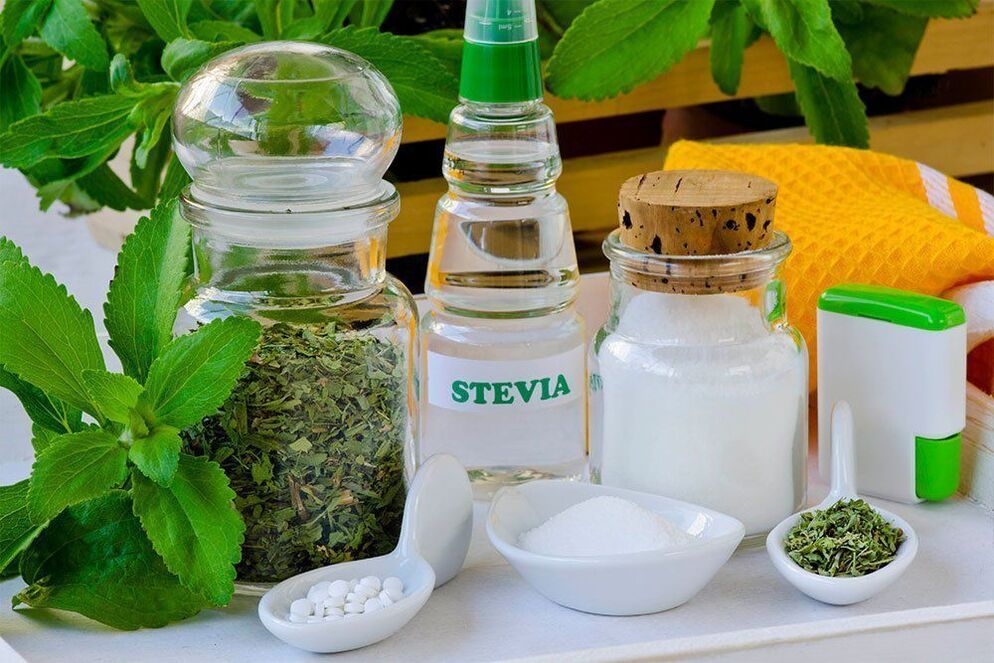
It is important for patients to understand the glycemic index of food. Today, there are some special tables to help you choose and correctly calculate the allowable consumption rate. In diabetic patients, foods with GI less than 55 (apple, cucumber, cherry, broccoli, lettuce, milk, cauliflower, etc. ) should be selected first. They break down slowly and cause little or no increase in blood sugar levels. Such products can be consumed up to 200 grams in a meal, but they are best consumed with protein foods.
Heat treatment increases GI.
with permission:
- Potatoes (not more than 200 grams per day);
- Dishes based on meat and vegetable soup;
- Lean meat and fish (chicken, turkey, pollock, barracuda, hake);
- Lentils;
- Low-fat fermented milk and dairy products, cheese with a fat content of less than 30%;
- Eggs (3-4 per week, but no more than 1 per day);
- Vegetable oil (not more than 1 tablespoon liter per day);
- Special candies, waffles, and bread for diabetics.
When making homemade preserves, sweeteners are added instead of sugar.
Nutrition of gestational diabetes
Pregnant women with a genetic predisposition to develop diabetes may face the development of so-called gestational diabetes at 20-24 weeks. It appears in the context of the genetically reduced sensitivity of tissues to inulin, and the hormones produced during pregnancy are increased: estrogen, prolactin, cortisol. They can block insulin and cause blood sugar to rise.
Usually, after childbirth, carbohydrate metabolism gradually returns to normal because the hormonal background normalizes. However, if the basic principles of nutrition and diet are not followed, there is not only the risk of preserving diabetes, but also the development of premature birth, maternal pyelonephritis, fundus disease and other complications. Complications during childbirth. Regular blood glucose testing is to detect gestational diabetes in time. If hyperglycemia is found, diet is prescribed.
In this case, it is recommended that women:
- Completely exclude simple carbohydrates (same sugar, candy, chocolate, pastries, white and black bread, bananas, grapes, juice, dried fruits, etc. ) from the diet;
- Limit the intake of complex carbohydrates to the range recommended by the doctor;
- Take away most of the vegetables and unsweetened fruits in your daily diet;
- Refuse to eat greasy food, fried food, semi-finished products, various sausages, and smoked products;
- When choosing the method of cooking products, mainly roast, stew and steam;
- Eat in divided portions, preferably once every 2 hours, highlighting 3 main meals (breakfast, lunch and dinner) and 2 additional meals (second breakfast, afternoon snack);
- Drink at least 1. 5 liters of water.
It is recommended that pregnant women with gestational diabetes measure their blood glucose after each meal.
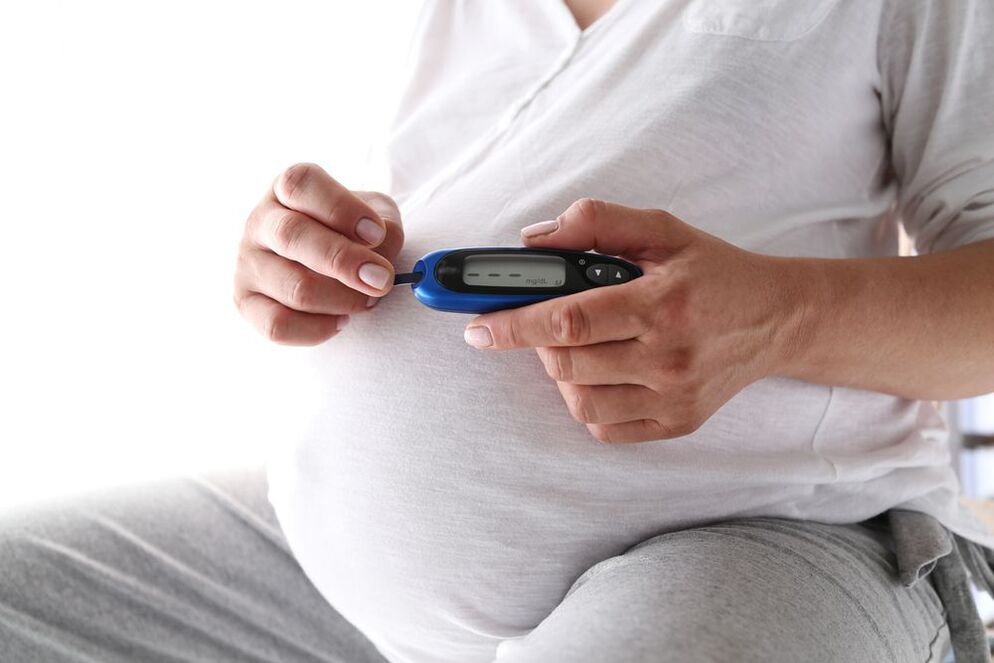
All these suggestions are related to the postpartum period. In any case, during the first few months of a baby’s life, breastfeeding women are forced to adopt a hypoallergenic diet and reject fried, high-fat foods. The same diet will help eliminate gestational diabetes and prevent it from turning into a chronic carbohydrate metabolism disorder within 2-3 months after delivery. If the blood sugar level does not return to normal after this period of time, women need to consult an endocrinologist to check and develop treatment strategies.
Hypoglycemic products
There are many foods that can help lower blood sugar levels. They are called hypoglycemic drugs and are recommended for diabetics. But because everyone is a unique biological system with individual characteristics, he can react to certain types of food in his own way, not just produce allergic reactions. Therefore, although hypoglycemic foods can provide invaluable help for patients with diabetes, especially type 2 diabetes, it is worthwhile to consult an endocrinologist before starting daily use.
Therefore, hypoglycemic foods include:
- Cherry (GI 22)-Contains anthocyanins, which help lower blood sugar and blood pressure, and eliminate the so-called bad cholesterol. The daily standard is 100 grams.
- Grapefruit (GI 29)-Contains naringin, a powerful antioxidant that helps improve insulin sensitivity in tissues. It is recommended to consume 1 medium-sized grapefruit or fresh juice extracted from it every day (not suitable for commercial use). But grapefruit can adversely affect the absorption quality of various drugs, so you need to consult your doctor before including it on the menu.
- Cinnamon is a source of polyphenols and helps control blood sugar levels. The daily fee is 1/2 teaspoon. It can be added to cheese, oatmeal, and is very suitable for making casseroles with apples.
- Broccoli is a valuable source of fiber and is very beneficial to diabetes. The substances it contains help to slow down the absorption of sugar in the intestines. The daily standard is 200 grams.
- Blueberries are one of the healthiest foods for diabetics because they contain valuable glycosides, tannins, and anthocyanins, which help maintain normal blood sugar levels and reduce the risk of diabetic retinal damage. The daily standard is 200 grams.
- Oatmeal and millet porridge are rich in fiber, which helps maintain blood sugar levels.
- Jerusalem artichoke is a natural source of insulin, so its use contributes to the normalization of glucose levels, and the presence of fructose in the composition provides a pleasant sweetness that allows it to be eaten raw or added to salads.
- Garlic is one of the healthiest foods for everyone, because it contains many antioxidants, natural antibacterial agents and other substances. Its use makes the pancreas more active, which is very valuable for patients with type 1 diabetes.
- Fish-fish diabetic patients eat at least 2 times a week, and whenever possible, they will try to replace meat dishes with fish. It helps to normalize sugar levels and obtain essential polyunsaturated fatty acids.
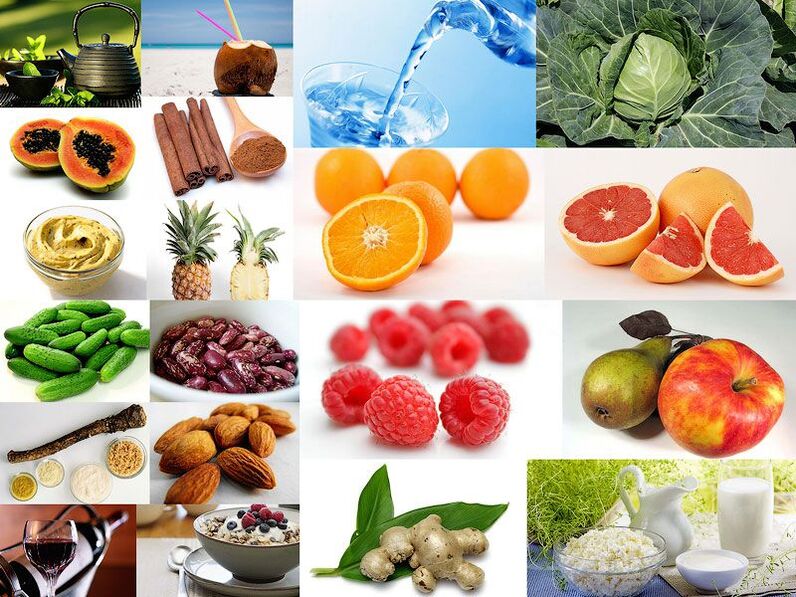
Therefore, the nutrition of diabetes can be diversified and delicious. To plan the menu in a competent way, it will not cause rejection, on the contrary, it will help improve energy and efficiency, because it largely conforms to the principles of reasonable nutrition. But remember, it is important to maintain a normal level of physical activity in diabetic patients, because exercise increases the sensitivity of tissues to insulin.

































